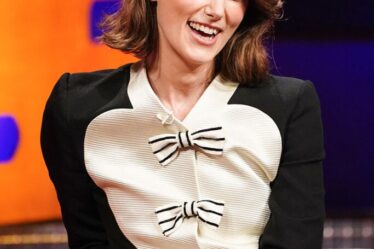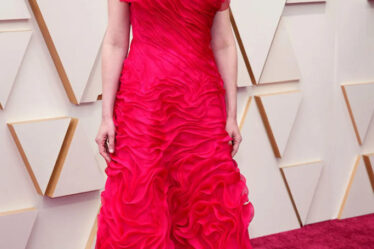
NEW YORK, United States — “I just knew I needed to stay in business. I’m stubborn, but I’m not foolish,” designer Thom Browne told BoF of his brand’s conceptual-meets-commercial balancing act. “Fashion is a business. As conceptual as you want to be, you do have to make sure that you approach it as a business. There has to be a commercial element to what you do.”
Browne understands both sides of the coin.
On the one hand, he is a showman whose fashion show theatrics have involved models tied down to beds and emerging from coffins. For a particularly memorable Spring 2013 menswear show, set in a Paris garden, silver minotaurs presaged a parade of men dressed like life-sized Slinkies. For his womenswear debut for Autumn/Winter 2011, staged at the New York Public Library, models wearing twisted versions of a nun’s habit were disrobed by male models dressed like priests.
Browne estimates that he sells 80 to 90 percent of his show pieces. But in seeming paradox, the designer, whose hair is shorn with military precision, is best known for his restrained 1950s- and 1960s-inspired, shrunken grey suits — short in both arm and leg — as well as his highly wearable blazers, shirts and knitwear, emblazoned with the subtle tricolour stripe which has become his signature.
Today, the collection is stocked by over 160 retailers. A collaboration with American department store Brooks Brothers, called Black Fleece, is now in its seventh year. And last March, Browne opened his second directly operated retail location (his first freestanding flagship outside the US) in the Aoyama district of Tokyo. Michelle Obama even chose a silk jacquard coat and dress from his fledgling womenswear collection to wear for her husband’s second inauguration as US president, for the first time making Thom Browne a name known by taxi drivers as well as fashion cognoscenti. “It really put the women’s in front of people and made people realise that I now do women’s, too,” Browne says.
Born in 1965, the middle child of seven in a strict Irish Catholic family, Browne grew up in the Rust Belt town of Allentown, Pennsylvania, where fashion barely registered. “I never thought about it,” he recalls. “You almost you didn’t even know it existed. You’d go to stores and you didn’t even think of how the clothing was designed and who made it. It was more of a commodity, in a way.”
The Browne children’s wardrobe, however — gray flannel slacks and jackets for winter; navy blazers and khaki trousers in the summer — undoubtedly inspired the designer’s aesthetic. “I think a lot of times you see a true American sensibility, and sometimes an East Coast sensibility, in the collection,” he says. “That was very much what we grew up wearing, very classic American sportswear and clothing.”
With fashion not yet on his radar, Browne’s interests lay in “sports and school — that was pretty much it.” From age nine, he began swimming several hours a day. Later, as a student at Notre Dame, a Catholic university in Indiana, he was a member of the swimming team. It’s perhaps not surprising, then, that athletic references often emerge in his work, from tennis racket-printed trench coats to white dinner jackets lined with football jersey mesh. “There’s a lot of sports references in my collections — in the fabrics I use, in the sensibility of the clothes,” Browne notes.
His immediate family was full of lawyers, doctors or businessmen — “with all of us in our family, doing something and doing it well was something that my parents really stressed” — but after graduation, Browne moved to Los Angeles to pursue a career in acting. With his athleticism and chiseled good looks, he found some success as a commercial actor (somewhere, there’s a Motrin commercial in which he plays a runner with a side ache). But more importantly, he began experimenting with vintage suits, washing them, then throwing them in the tumble dryer and cutting them down to create his signature shrunken silhouette.
In 1998, Browne gave up acting and decided to move to New York; within two weeks, he had a wholesale position at Giorgio Armani. “I really just needed a job and it just happened to be in fashion,” he recalls. Soon afterwards, he moved to Club Monaco, where he honed his skills, designing slim trousers, cardigans and oxford shirts. “It didn’t really influence how I approached design,” says Browne. “But it did teach me how to actually build a business.”
Importantly, the job also put him in touch with Queens, New York-based tailor Rocco Ciccarelli — often known as the tailor behind the tailors — who sewed samples for Club Monaco and to whom Browne turned, in 2001, when he decided to launch his own brand and make his first five suits — all grey.
“I pretty much learned everything through my tailor Rocco,” says Browne. “I always knew that tailoring was going to be something that, if I was going to be in fashion, [my collection] was going to centre around. The most important thing for me is to make interesting clothes that are really well-made. That will always be fashionable.”
At the time, men’s casualwear reigned supreme and Browne saw a hole in the market. “I loved wearing jackets and trousers myself and I wanted to reintroduce it to people like myself who never could find anything that they wanted… or wanted to wear. I thought that if I liked it, somebody else would like it. And so that’s basically how it started.”
“Back then, all tailored clothing was very businesslike, very much like what young guys’ fathers were wearing — and they didn’t want to be like their fathers,” he continues. “I wanted to reintroduce tailored clothing to them so they felt they could dress in it and feel as comfortable and as young as they did in jeans and t-shirts.”
With an initial offering of made-to-measure suits, Browne decided that “if I was going to stand for something, I needed to be the poster child for it and that’s what I did. I made suits for myself, I wore them around, people asked me where I got them, and I said, ‘Well if you want one, I can make you one.’”
The tactic attracted attention, but in the beginning, Browne’s clients were limited mostly to artists, he says. “There was a good year and a half where most stores didn’t really get it. There were really important journalists that recognised that something was going on because it was interesting and new, [but] the stores, they were seeing something that was unsalable.”
“Everyone told me to change,” he recalls. “Everyone told me to lengthen the jackets and do something with the trousers. I don’t know why people thought it was so provocative, because it’s evolved into something so much more specific now. [But] really it was Colette and Bergdorf Goodman that took the chance on it. And then after that, everybody jumped on the bandwagon.”
Browne has since expanded into ready-to-wear for both men and women, but estimates that his made-to-measure business is “still half of what we do. It’s very important because it’s how I started. It’s how I funded the collections at the beginning, from every suit I sold. It will always be an important part of the business. I’ve said this from the beginning: I like the idea of guys having the romance of getting clothing made for themselves.”
He also revels in the romance of telling a story with his seasonal shows. “[For collections,] I approach design from a more pure design point of view as opposed to a more commercial point of view. I love the conceptual part because it makes the commercial part even more interesting every season. It moves [ideas] forward every six months. And the classic part of it just gets better and better because of how the collections evolve.”
When designing, Browne skips putting together a mood board. “It’s really going straight to making clothes. I conceptually sketch — almost like stick drawings — how I like the proportions to actually play with each other. And then the story sometimes happens very early on, or it happens later. There are always loose references, never something literal. But the most important thing is starting with the idea of playing with proportions.”
In 2009, when sales were $6.3 million, according to market sources, Browne sold a majority stake in his company to Japan’s Cross Company. “I knew that they were right when they understood exactly why I did the shows, why I did the collections that I do, why I did the classic part of what I do… there was just never a question on why I did what I did,” he explains. “Since then, I’ve opened a store in Japan, the business has grown, we’ve started more of the accessories collections, I’m able to do women’s now. So all across the board, it’s just made it possible for me to do a lot more.”
It’s also provided Browne (who also works with French sportswear company Moncler on their men’s line Moncler Gamme Bleu) with the backing to launch a new, more classic line for Fall 2014, centered around the classic grey suit. Calculated to appeal to customers at high-end department stores, the line will also include shirts, coats and neckwear, with proportions that are less directional than his runway collection. Suits will start at $2,200, while shirts will be available for $350.
“I wear [my pants shortened] this way, but not everybody does as severely as I do. And it’s not like I think everybody should. The new line is for a broader customer, a customer that doesn’t want something as forward as the runway collections, but wants something really well-made. A more classic guy, who has always liked my collections, but thought that it was a little too much and wants something that’s more appropriate for work, will I think be really interested in the collection.”
But at the same time as he aims to broaden his business, Browne cautions that “the most important thing is to really be true to yourself. I think sometimes young designers want to please too many people, or they want to do what is out there now, as opposed to trying to create something on their own. But if you’re going to do something that’s going to make a difference or be important enough to be around for a long time, you really have to stay true to what you set out to do.”
“I never seriously thought of changing anything, but I do remember thinking early on, ‘I don’t know what I’m going to do if this doesn’t work out.’ So, there was that moment. But thank God it worked [out].”



